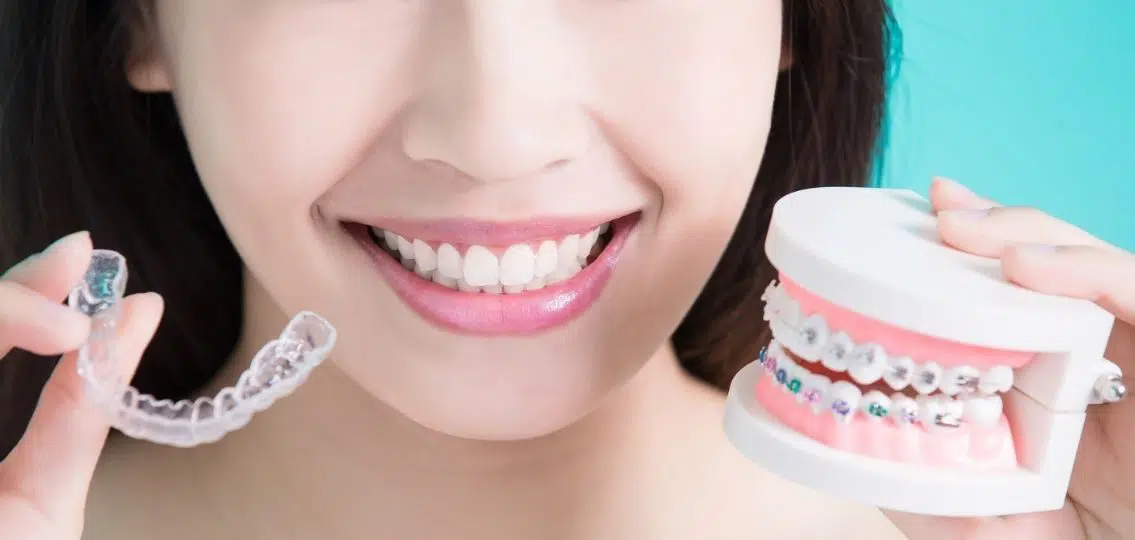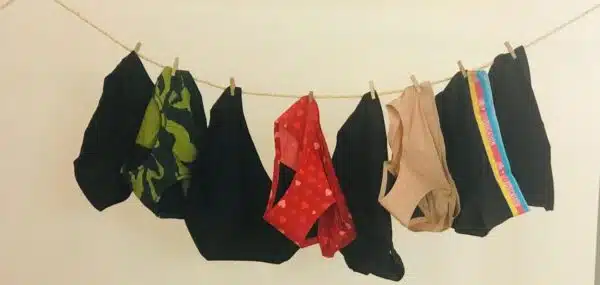When I took my teen to get braces, I’ll admit I was taken aback to see those good ol’ silver “train tracks” as one of the options. While seventh grade pre-braces me found them to be the height of sophistication (yep, I might have even folded up some foil to try to fake them), once I actually got them on, I was singing a different (painful) tune. I will admit I went through some angst combining my braces with glasses throughout high school, but I sure was happy to have a senior picture with straight teeth. (Thanks, Mom!)
[adrotate banner=”226″]Today, there are more options available to teens who need braces, especially for those who want to look good while wearing them. One of the most popular choices for a less prominent look are clear tray aligners, like Invisalign, says Dr. Philip D. Bomeli of Solon Orthodontics in Solon, Ohio. “Clear tray aligners certainly offer an aesthetic advantage over traditional braces that is appealing for a lot of people,” he says, adding that they might also be attractive to adults whose teeth have shifted.
However, different kinds of braces might not be right for every patient. Here are some pros and cons of clear tray aligners to consider.
Pros of Clear Tray Aligners:
You might need fewer appointments.
Clear tray aligner patients can often go longer between appointments. Bomeli says he likes to see traditional braces patients approximately every eight weeks. Meanwhile, clear tray aligner patients can go 10 to 12 weeks between appointments. Taking a few miles off the parent taxi can be a selling point right there.
You don’t have to limit your food choices.
Caramel apples. Popcorn. Nuts. Those and other sticky, chewy or hard foods are off-limits to the traditional braces wearer to avoid breakage, but clear tray aligner wearers don’t have any such limitations and can nosh away.
They are relatively hassle-free.
There’s no such thing as a “clear tray aligner emergency,” Bomeli notes. That might be music to the ear of any parent who has cancelled an early morning meeting to run a teen to the orthodontist to repair a bracket that popped off. “There are no braces to come loose and no wires to poke you,” he points out.
Cons of Clear Tray Aligners:
Not every patient is a good candidate.
Clear tray aligners have some limitations compared to traditional braces, says Bomeli. “If patients need to have certain bite features or excessive crowding corrected, clear tray aligners might not be the best treatment method,” he says. “In general, the more severe a patient’s orthodontic problems are, the less likely they are to be a good candidate for clear tray aligners.” Also, the trays must be worn approximately 20 hours per day, every single day in order for them to move teeth, which isn’t possible or realistic for some patients.
Treatment might take longer.
While overall treatment length is determined by the relative severity of a patient’s orthodontic needs regardless of method (clear aligners vs. traditional braces), Bomeli has found that certain types of tooth movement, such as tooth rotations, are more time consuming with clear tray aligners compared to traditional braces.
No matter what type of orthodontic treatment you are considering, Bomeli urges people to see a dental professional. Specifically, he cautions against some direct-to-consumer aligner systems where he’s seen some concerning trends, mainly because the treatment is not directly being monitored by a dental professional. “An orthodontist will help you choose the option that’s right for you and your specific situation,” he says.




